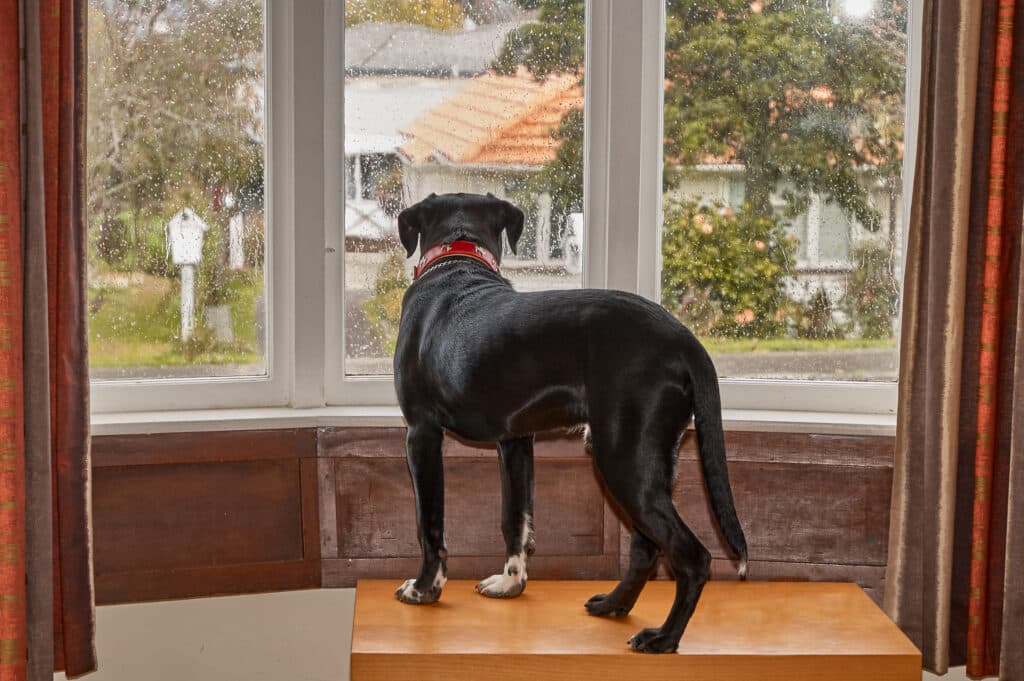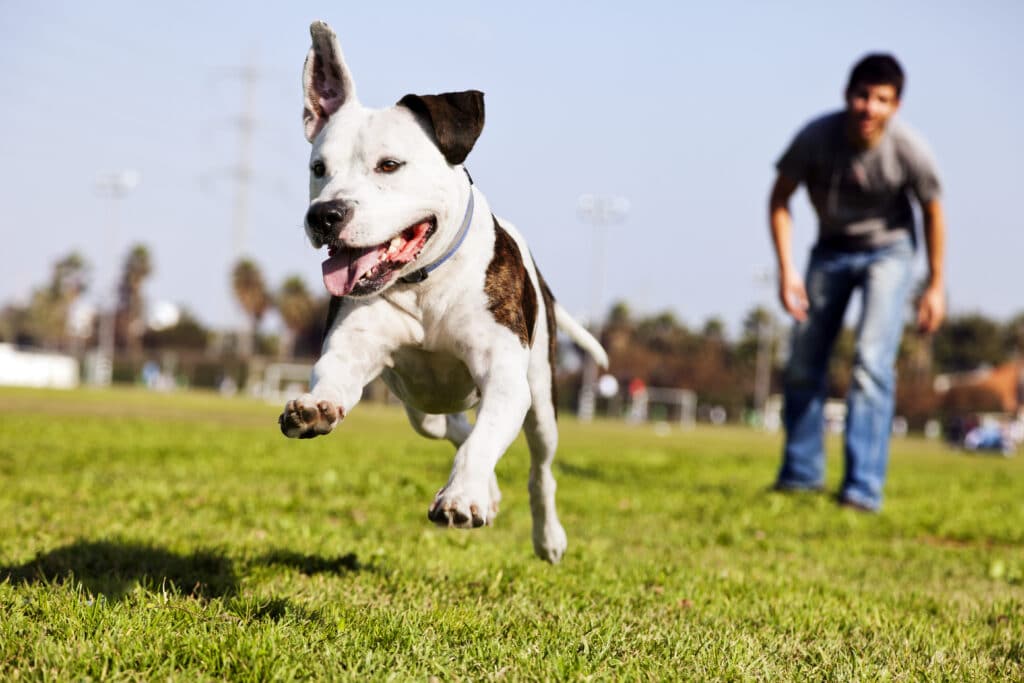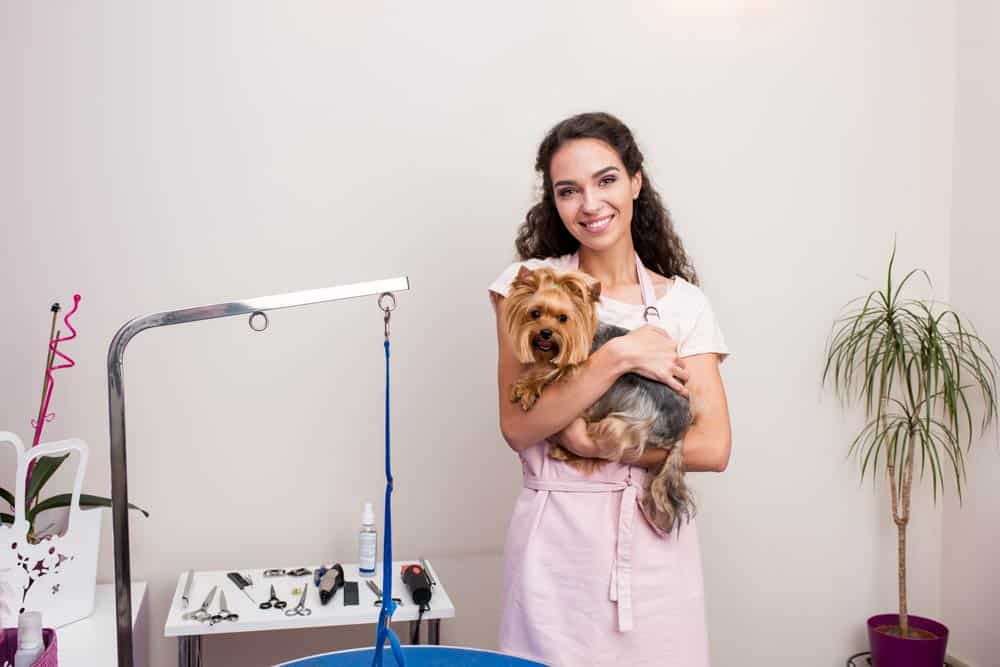While the pandemic era was a boon for pups, now that many people are resuming their normal lives, many dogs are experiencing separation anxiety. To compound this issue, many dog parents are experiencing anxiety as well.
After two years of being home with their dogs, the people that are now returning to work or taking much-needed vacations are wondering how they can help ease anxiety when boarding a dog.
If you run a boarding facility or doggy daycare, these are some fantastic tips in this dog boarding guide to help both your canine and human clients overcome separation anxiety.
What is Separation Anxiety?
Like humans, dogs can experience a range of emotions when removed from their families. Familiarizing yourself with the signs and symptoms of separation anxiety in dogs is critical.
What Causes Separation Anxiety?
Dogs have never been solitary animals. Even their wolf ancestors prefer to live and hunt in family groups. Dogs still exhibit many wolf-like traits, and being alone can trigger a sense of abandonment.
Since modern dogs rely on their humans for food, water, playtime, affection and security, it’s natural that some level of anxiety occurs when that human leaves. Even dogs who have the company of another, more relaxed dog might still display these symptoms. In some cases, the anxious dog triggers the anxious dog, leaving two anxious dogs in the house.
Over the last few years, dogs have shown a sharp increase in separation anxiety. So many people worked from home, which allowed them to spend all day with their pups. Now that more people are returning to work and taking vacations, these dogs’ routines have changed dramatically.
Separation anxiety is the result.

What Does Separation Anxiety Look Like?
Recognizing the signs of separation anxiety is the first step to helping dogs overcome this stress level.
When dogs are home, their anxiety manifests in several ways. The dog may howl or bark for hours, they might destroy furniture out of frustration, and, in some cases, the dog may even injure itself trying to escape. Frequently, a previously house-trained dog will have indoor accidents due to anxiety.
In a kennel situation, separation anxiety may look a little different. A stressed and anxious dog might avoid other dogs, not engage in play, they may refuse food and water, and, in rare cases, their stress level is so high that they growl or snap at other dogs.
How Does a Dog’s Human Affect Separation Anxiety?
With the strong bond people have with their pups, it’s no wonder humans experience separation anxiety too. Some pet parents even liken dropping off their dog at boarding to dropping off their children for the first day of school.
Dogs Pick Up on Their Humans’ Feelings
Dogs are highly sensitive and emotional creatures. They’re very aware and in tune with the world around them, including their humans’ emotions. Many pet parents know their dogs understand when they’re feeling sad or excited.
This is one of the most rewarding aspects of sharing your life with your dog. Dogs are mirrors of their humans in many ways. While mirroring emotions is one of the most fulfilling ways we connect with our dogs, it can also have negative repercussions.
Nervous Human, Nervous Dog
Since our dogs look to us for guidance, negativity, panic and anxiety can affect how our dogs react. When their human is feeling anxious, dogs may interpret this as an immediate threat.
A dog’s reaction to a threat, real or imagined, results in a wide variety of responses. When their human is nervous, an anxious dog may become hypervigilant and perceive everything as a threat. Other dogs may cower, try to hide or strain at their leash to get free.
While dogs can sense anxiety very easily, they don’t know what caused it. Therefore, when their humans are anxious about something like a work deadline, the dog doesn’t recognize that as an easily solved problem. They just know their human is stressed, so, in a dog’s mind, they must also be stressed.

How Can Boarding Facilities Help Ease a Dog’s Anxiety?
As a dog boarding and kennel owner, you want all your canine clients to have a good experience. Anxious dogs are not uncommon, especially if they’re new to the boarding experience. However, one of the easiest ways to soothe a nervous dog is also to soothe their nervous owner.
Here are some ways you can help when boarding a dog with separation anxiety and more about how to help a dog relax by reassuring the dog’s owner.
-
Communicate With the Owner
All dog parents want the best for their dogs, so communication is key. Be sure to explain all aspects of how you run your facility and direct new clients to the FAQ page on your website or give them written materials like brochures and pamphlets.
-
Schedule a Time to Talk in Person
After dog parents read through the information you provide, they’re likely to have additional questions. Set up a time to talk to new clients so you can answer these questions and explain how your facility works.
Now is the time to try and alleviate your new client’s concerns. Explain what their dog’s day will look like, describe the training your staff has completed, mention the other dogs their pup might spend time with and express your dedication to helping every anxious dog feel comfortable in their home away from home.
-
Arrange to Meet Your Canine Client
The best way to understand how a new dog will fit into your boarding facility is to meet them. This helps you learn more about the dog’s personality, anxious attachment, quirks and behavior. You’ll also be able to study the relationship dynamic between the dog and their human.
-
Ask About the Dog’s Health and Behavior History
As a kennel owner, you pride yourself on giving the dogs the best care possible. Part of this is being aware of every dog’s unique health concerns. This is not only to protect other dogs from communicable diseases, but it also helps you understand if a dog may be in pain or have another health condition that might affect their behavior.
It’s also critical to learn more about a dog’s behavior. Some dogs don’t seem to care about anything but eating and having fun. Other dogs are choosy when it comes to other dogs. By learning more about what makes this new dog tick, you’ll be better able to determine that they’ll be a good fit in your facility.
-
Set Up a Trial Visit
It’s difficult to predict how a dog will behave in a boarding facility. Most dogs behave one way with their owner and another way when their owner is not present. Seeing this reaction before the dog’s extended stay is a great way to ensure that the dog will do well while their parents are away.
During the trial visit, it can be important to see how the dog reacts when they can see their parent and when they can’t. Initially, almost all dogs will experience some form of separation anxiety, and you’ll be able to judge the severity and the duration of the nervous behavior.
Preparing Pet Parents for Boarding a Dog
Caring for dogs also means caring for the dog’s owners to a certain degree. Many people worry and feel guilty about leaving their dogs with strangers while they’re at work or on vacation. These are a few ways you can reassure your human clients that their dogs will be happy and well cared for.
Describe the Daily Routine
Pet parents almost always want to know what their dog will be doing every day. This helps them visualize their dog’s experiences and can offer some peace of mind.
If you have a printed schedule that you share with your employees, consider sharing it with the clients too. This way, they’ll have a tangible reminder of what their dog is doing throughout the day.

Give Them a Checklist of Items to Bring
When they consider boarding their dog, most people would prefer that their dog has as many comfort items from home as possible. Remind dog parents of the vital items like their dog’s food, health records and medications, but also let them know which of their dog’s comfort items are allowed.
For instance, many people might like to bring their dog’s bed or blanket and some toys. Another item they could bring might be something that holds a scent familiar to the dog. This is generally a T-shirt or other article of clothing containing the scent of the dog’s humans.
Have a Conversation About the Owner’s Concerns
After your new human client tours your facility and learns about how you run your kennel, they’re bound to have more questions. Before they commit to boarding their dog, be sure their questions and concerns are addressed and resolved.
Allow Clients Access to Facility Camera Systems
One of the easiest ways to help pet parents relax is by letting them know that check in on their dog via your facilities’ camera system. When they’re able to see their pup playing with other dogs and interacting with staff members, it can help them relax and focus on the task at hand.
Use a Software System That Keeps Clients in Mind
Managing any business requires the right tools. Luckily for kennel owners, that tool is Boarding by DaySmart Pet. Its features allow you to easily manage the business side of boarding while also offering unmatched services to your client.
Ease of Communication
A text message is one of the preferred methods of communication for your clients. With the DaySmart Pet software, you can provide pet parents with updates throughout the day. You can even include two-way texting so your clients can reply to text messages and respond when they need to, all through the DaySmart Pet app.
Appointments and Bookings Made Easy
When you make your business’ website and software systems easy to use, your clients are more likely to take advantage of your services. When setting up appointments, submitting their dog’s veterinary records and making payments are easy for your client, they’re more likely to keep using your services because it’s so convenient.
Encourage Customer Loyalty
Clients who feel like they have exclusive access to promotions and specials are more likely to take advantage of those offers and savings. Creating this type of customer loyalty system not only allows you to retain clients but also gives you insight into which of your promoted services are more successful than others.
Understand Your Customer
By monitoring your customer’s use of the app, you can gain valuable information about them. How long do they visit a certain page? When a customer receives a text message, do they click through to your website?
By monitoring this type of information, you can adjust your marketing strategy to the specific habits of your clients and boost sales and engagement.
Offer Bookings and Services Through Social Media
Social media platforms are a great way to give clients a glimpse into the nature of your business. Sharing photos and status updates is a great way to connect, but when your social media page offers a booking option, you can expect to see an increase in sales.
DaySmart Pet allows your clients to access the calendar to make appointments, allowing them to bypass making a phone call.
Help Ease Anxiety in Your Canine and Human Clients
Anxiety is normal in new situations, and this applies to both canines and humans. By offering comprehensive tools and information to your clients, they’ll be able to make informed decisions about boarding a dog.
By lessening the anxiety that your clients feel, there’s a good chance that a sense of calmness and control will carry over to their dog.
Are you interested in providing convenient and quality service to your clients? Click here to learn more about how DaySmart Pet provides intuitive solutions for all of your pet service needs.




